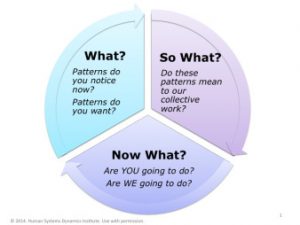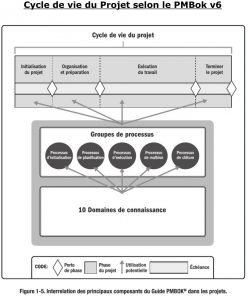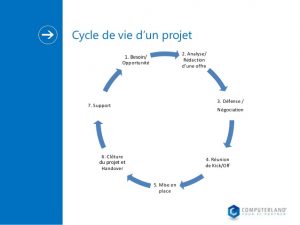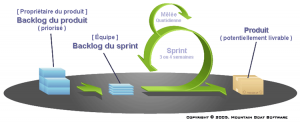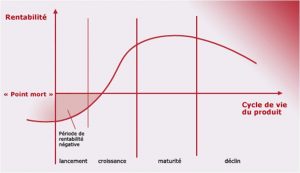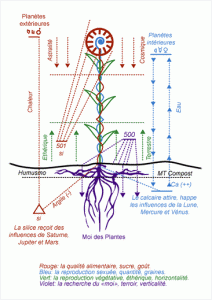PMI-ACP test questions and answers
Test PMI-ACP
Mock exam 3
40 questions
Test Name: PMI-ACP Lite Mock Exam 3
Total Questions: 40
Correct Answers Needed to Pass: 30 (75.00%)
Time Allowed: 60 Minutes
This is a cumulative PMI-ACP Mock Exam which can be used as a benchmark for your PMI-ACP aptitude. This practice test includes questions from all exam topic areas, including sections from Agile Tools and Techniques, and all three Agile Knowledge and Skills areas.
1. What is the activity called when a person performs a self-assessment to understand how he or she may improve performance?
A. A retrospective
B. A resolution
C. An INVEST analysis
D. An appropriating
2. Jill is explaining the importance of an agile team being empowered. What does an empowered team mean?
A. A team that is management-driven and focused solely on pleasing the management.
B. A team that relies on external leadership to show it the path forward.
C. A team that is self-organizing and knows how to solve problems with minimal need for oversight
D. A team that solves problems through the use of market research.
3. What does the product backlog serve as initially in an agile project?
A. A rough estimate of product requirements
B. An exact estimate of product requirements
C. A rough estimate of product standards
D. An exact estimate of product standards
4. What is a control limit?
A. An objective range that indicates if a process is considered stable.
B. An objective range that indicates if a process is improving in residual activity.
C. A threshold value that indicates if a process is improving in reaction time.
D. A threshold value that indicates if a process is declining in responsiveness.
5. Rebecca and her agile team have assembled to play a game of planning poker to make decisions about the relative work effort of the product’s user stories. When a team collectively makes decisions, what is the decision model known as?
A. Anticipatory
B. Estimation
C. Participatory
D. Planning
6. In agile modeling, what is a good example of a name given to a persona?
A. App buyer
B. App developer
C. App host administrator
D. James Quill
7. Of the following, which is a key soft skill negotiation quality?
A. Creative intelligence
B. Intelligence quotient
C. Artificial intelligence
D. Emotional intelligence
8. On a burndown chart, how does the charted ‘ideal/estimated work accomplished’ series appear?
A. As a curved, downward sloping line
B. As a straight, upward sloping line
C. As a straight, downward sloping line
D. As a curved, upward sloping line
9. Which agile framework has a project life cycle with the following five stages: feasibility study, business study, functional model iteration, design and build iteration, and implementation?
A. Dynamic systems development method (DSDM)
B. Static systems development method (SSDM)
C. Extreme systems development method (XSDM)
D. Dynamic product development method (DPDM)
10. In terms of communications management, how does an agile team promote simple and effective communication?
A. Through collaborative brainstorming events
B. Through the use of e-mail.
C. Through the use of formal boardroom meetings.
D. Through the use of lengthy memorandums.
11. Which agile framework emphasizes the practice of collective ownership, continuous integration, and pair programming?
A. Scrum
B. Crystal
C. DSDM
D. XP
12. A portion of Tom’s agile team is not collocated but rather geographically dispersed throughout the world. What is one factor the team should consider when conducting its business?
A. Whether or not to consider cultural and language differences to promote an effective communication method.
B. Whether or not to reflect after an iteration.
C. Whether or not to use earned value management as an agile accounting method.
D. Whether or not to conduct risk-based spike tasks.
13. As an agile certified practitioner, Patricia emphasizes the virtue of fine-grained communication in the daily stand-up meeting. How is this virtue a sign of a healthy stand-up meeting?
A. Having fine-grained coordination during a stand-up meeting is a false indicator of a healthy stand-up meeting. The team should have a broad focus to remain open to innovative ideas from other sectors of industry.
B. Having fine-grained coordination during a stand-up meeting indicates a lack of defects and well tested and integrated code.
C. Having fine-grained coordination during a stand-up meeting indicates that each team member is solely focused on his or her own obstacles and uninterested in other team members’ progress or obstacles.
D. Having fine-grained coordination during a stand-up meeting indicates that the team understands how important it is to have a sharp, interdependent focus for the duration of the meeting.
14. Henry and his team are assigning story points to a particularly vague and unclear user story. What should the agile team typically do in such a case?
A. Assign the user story an arbitrarily high number
B. Assign the user story with the mode of all previously scored user stories
C. Assign the user story the mean of all previously scored user stories
D. Remove the user story from the backlog
15. What is a positive indicator that agile may be appropriate to an organization as a new project methodology?
A. That the adopting organization values a competitive, non-collaborative environment for the sake of boosting revenue.
B. That the adopting organization will review the product once at the end of the release when all requirements have been reached.
C. That the adopting organization values strict, inflexible project management techniques.
D. That the adopting organization will assign dedicated customer representatives to the project effort.
16. Which is the best definition of prioritization?
A. The vector ordering of user stories with respect value.
B. The fixed ordering of user stories with respect to value.
C. The relative ordering of user stories with respect to value.
D. The scalar ordering of user stories with respect to value.
17. Ursula has several user stories that she and her agile team need to provide an estimate for regarding their relative size to one another. What scoring system might Ursula and her team use to estimate relative size?
A. Story marks
B. Story pips
C. Story points
D. Story cards
18. What can an agile team do to promote an innovative and collaborative team space?
A. Rotate team member roles
B. Isolate team members by function
C. Separate team members by function
D. Reserve a space for daily stand-up meetings
19. In the XP principle of continuous integration, what happens after new code has been tested and integrated into the production code base?
A. The production code is reviewed in its entirety by pair programmers.
B. The production code is tested.
C. Other code is integrated before testing the production code.
D. The production code is postfactored to add redundancy measures.
20. Jill and her team just performed an Exploratory 360. Which framework is Jill most likely leveraging in her agile effort?
A. XP
B. Crystal
C. AUP
D. DSDM
21. What are some activities that an agile team would NOT be performing in Highsmith’s agile project management closing phase?
A. Creating the project vision
B. Completing remaining project work
C. Authoring user documentation
D. Authoring product release instructions
22. When value stream mapping it is important to identify areas of waste that exist in the process. The pneumonic device WIDETOM may be used to remember the different forms of muda (or waste). What does the I in WIDETOM stand for with respect to waste?
A. Inspection
B. Interest
C. Inventory
D. Installation
23. The agile triangle includes what three parameters?
A. Cost, scope, value
B. Scope, schedule, constraints
C. Value, quality, constraints
D. Scope, cost, schedule
24. Bob and Laurie share the same work environment and so are in tune with each other’s daily progress as a result of hearing the same environmental sounds. What type of communication are Bob and Laurie participating in when neither must use words to know, in part, about what the other person is thinking or feeling?
A. Background sensory communication
B. Active listening
C. Subliminal communication
D. Osmotic communication
25. Select a common agile problem-solving technique.
A. Be kind, probe
B. Devil’s in the detail
C. 1Y
D. Asking probing questions
26. Why is verification and validation performed frequently on an agile project?
A. Because a product release typically lasts several sprints, verification and validation take place frequently to keep sprints on track.
B. Verification and validation are not performed frequently.
C. Because a product release typically lasts several iterations, verification and validation take place frequently to keep iterations on track.
D. Because iterations are typically short in duration and a working product is delivered at the end of each iteration, verification and validation must take place frequently to ensure product quality.
27. Stacey, the head of a multi-national corporation, is considering hiring an agile team to develop a new database system. However, the agile team Stacey is working with tells her that estimating final cost can be difficult. Why is it more difficult to estimate cost on an agile project?
A. Because agile contracts have no scheduling or planning
B. Because customers have little experience with the agile quality to cost and value triangle.
C. Because agile welcomes changing scope.
D. Because the cost of developers is constantly in flux.
28. Which of the following duties is expected of a servant leader?
A. Affinity planning.
B. Team enabling.
C. Kanban tracking.
D. User story authoring.
29. Why should fixed-price contracts be avoided for agile development?
A. Because fixed-price implies that the time and material costs shall not exceed certain thresholds which causes undue stress on agile accounting practices.
B. Because fixed-price implies that the schedule is fixed which no agile development effort should bind itself against.
C. Because fixed-price implies that the revenue structure is fixed to a point that is problematic for development compensation.
D. Because fixed-price implies that scope is fixed and discourages the development team from exploring innovative ideas outside the scope that may add value to the product.
30. Why is a warm, welcoming team space environment important in agile development efforts?
A. Because it promotes an inflexible atmosphere.
B. Because it produces more efficient software code.
C. Because it decreases employee retention.
D. Because it promotes effective communication, collaboration, and innovation.
31. Jessica as a product owner believes steadfastly in the feature prioritization. Why might Jessica believe in prioritization?
A. Because it ensures that all team members know that cost is the only factor in the prioritization equation.
B. Because it ensures that all team members are aware that risk never enters the equation of prioritization.
C. Because it ensures that all team members are aware that risk trumps value in the prioritization equation.
D. Because it ensures that all team members are aware of the product features most valuable to the customer.
32. George as a product owner believes steadfastly in the feature prioritization. Why might George believe in prioritization?
A. Because it ensures that the most valuable features are developed first.
B. Because it ensures that all product features get delivered in a release.
C. Because it ensures that all team members know that valuable product features will always be developed in the affinity plan.
D. Because it ensures that the local safety of all features are developed first.
33. Margaret as a product owner believes steadfastly in the feature prioritization. Why might Margaret believe in prioritization?
A. Because it facilitates a discussion helpful for post-iteration reflection.
B. Because it facilitates lessons learned on product defects.
C. Because it maximizes the earnings potential of product developers.
D. Because it facilitates an optimized and early return on investment.
34. Hanna as a product owner believes steadfastly in the feature prioritization. Why might Hanna believe in prioritization?
A. Because it helps order the closing backlog for release.
B. Because it helps order the Kanban board for task sequencing.
C. Because it helps order the iteration backlog for release planning.
D. Because it helps order the product backlog for release planning.
35. Hanna as a product owner believes steadfastly in the feature prioritization. Why might Hanna believe in prioritization?
A. Because it ranks the team members in order of velocity.
B. Because it provides for an optimized early ROI.
C. Because it provides for a local pessimum in product delivery.
D. Because it provides for value-based ranking of developer tasks.
36. Henrietta, the head of a multi-national corporation, is considering hiring an agile team to develop a new database system. However, the agile team Henrietta is working with tells her that estimating final cost can be difficult. Why is it more difficult to estimate cost on an agile project?
A. Because market demand is difficult to predict.
B. Because agile welcomes changing scope throughout a project which will change costing.
C. Because the customer has not idea of what it will be necessary to spend to buy a valuable product.
D. Because the cost of product development is highly volatile.
37. Janet, the head of a multi-national corporation, is considering hiring an agile team to develop a new database system. However, the agile team Janet is working with tells her that estimating final cost can be difficult. Why is it more difficult to estimate cost on an agile project?
A. Because market demand is difficult to predict.
B. Because agile welcomes changing scope, which can increase or decrease the level of effort.
C. Because the cost of developers is a sunk cost.
D. Because minimal planning is involved with agile.
38. Why is it more difficult to estimate cost on an agile project?
A. Because no planning is involved with agile.
B. Because agile welcomes changing scope.
C. Because the cost of developers is constantly in flux.
D. Because customers have little experience with the agile quality to cost and value triangle.
39. Peter, the head of a multi-national corporation, is considering hiring an agile team to develop a new database system. However, the agile team Peter is working with tells him that the exact cost of delivering the new database system is difficult to estimate. Why is it more difficult to estimate cost on an agile project?
A. Because of its requirement to use self-organizing teams.
B. Because the cost of developers is constantly in flux.
C. Because agile welcomes changing scope.
D. Because no planning is involved with agile.
40. Usually peer pressure has a negative connotation. Why is peer pressure viewed as an advantage of the daily stand-up meeting?
A. Because competition breeds high productivity and peer pressure has been identified by human resource experts to be the best method for increasing competition in the workplace.
B. Because in an agile project the team is dependent upon each member to provide consistent and sustainable results for the success of the project. Peer pressure in this context is a positive attribute because team members, or peers, feel responsible for providing positive results so the team can function efficiently.
C. Because peer pressure encourages team members to take huge project risks that otherwise would never transpire and an underlying theme of agile project management is risk seeking.
D. This question is incorrect. Peer pressure is not an advantage of the daily stand-up meeting.
Answers
1. What is the activity called when a person performs a self-assessment to understand how he or she may improve performance?
A. A retrospective
B. A resolution
C. An INVEST analysis
D. An appropriating
A – During reflection or retrospectives, an agile team reserves time to reflect on the work it has completed with the objective of continuous improvement. In these self-assessment/team-assessment events, topics can include: lessons learned from successes and failures; team standards that worked, failed, or were not properly followed; and other areas of improvement. [Agile Retrospectives: Making Good Teams Great. Esther Derby, Diana Larsen, Ken Schwaber.] [Knowledge and Skills: Level 2]
2. Jill is explaining the importance of an agile team being empowered. What does an empowered team mean?
A. A team that is management-driven and focused solely on pleasing the management.
B. A team that relies on external leadership to show it the path forward.
C. A team that is self-organizing and knows how to solve problems with minimal need for oversight
D. A team that solves problems through the use of market research.
C – Empowered teams – ones that are self-organizing and know how to solve problems with minimal management involvement – are a cornerstone of the agile methodology. An agile team feels empowered when it collectively assumes responsibility for the delivery of the product (i.e., taking ownership). [Coaching Agile Teams. Lyssa Adkins.] [Knowledge and Skills: Level 1]
3. What does the product backlog serve as initially in an agile project?
A. A rough estimate of product requirements
B. An exact estimate of product requirements
C. A rough estimate of product standards
D. An exact estimate of product standards
A – The product backlog initially serves as a rough estimate of the product’s requirements [Agile Estimating and Planning. Mike Cohn.] [Agile estimation]
4. What is a control limit?
A. An objective range that indicates if a process is considered stable.
B. An objective range that indicates if a process is improving in residual activity.
C. A threshold value that indicates if a process is improving in reaction time.
D. A threshold value that indicates if a process is declining in responsiveness.
A – Control limits – those which set an objective range to indicate whether a process is controlled or stabilized or defect free (e.g., within three sigmas of the mean) – may be used in an agile project. Generally, a control limit of three-sigma (s) is used on a Shewhart control chart. A sigma refers to one standard deviation. So three sigmas indicates a limit three standard deviations away from the mean in both the positive and negative direction. This applies to normal data, where a normal distribution curve has been obtained. [Lean-Agile Software Development: Achieving Enterprise Agility. Alan Shalloway, Guy Beaver, James R. Trott.] [Knowledge and Skills: Level 3]
5. Rebecca and her agile team have assembled to play a game of planning poker to make decisions about the relative work effort of the product’s user stories. When a team collectively makes decisions, what is the decision model known as?
A. Anticipatory
B. Estimation
C. Participatory
D. Planning
C – To build trust among the team, agile believes heavily in participatory decision models where team members collaborate to make decisions. Although a team leader or scrum master will need to make some decisions individually, many decisions can be made by the team collectively. These agile principles are also known as collective ownership, self-organization, and self-discipline. In collective ownership, the team members are equally responsible for project results and are empowered to participate in decision making and problem solving processes. [Agile Retrospectives: Making Good Teams Great. Esther Derby, Diana Larsen, Ken Schwaber.] [Knowledge and Skills: Level 2]
6. In agile modeling, what is a good example of a name given to a persona?
A. App buyer
B. App developer
C. App host administrator
D. James Quill
D – A persona is a notional user of the system under development. Being much more detailed than actors in use case modeling where generic user names are assigned (e.g., end user), personas try to elaborate on users with detailed descriptions to provide context to the developers. Some personas have such notional details as name, address, age, income, likes and dislikes, and other specific details. [User Stories Applied: For Agile Software Development. Mike Cohn.] [Agile analysis and design]
7. Of the following, which is a key soft skill negotiation quality?
A. Creative intelligence
B. Intelligence quotient
C. Artificial intelligence
D. Emotional intelligence
D – Key soft skills negotiation qualities for the effective implementation and practice of agile are: emotional intelligence, collaboration, adaptive leadership, negotiation, conflict resolution, servant leadership. [Coaching Agile Teams. Lyssa Adkins.] [Soft skills negotiation]
8. On a burndown chart, how does the charted ‘ideal/estimated work accomplished’ series appear?
A. As a curved, downward sloping line
B. As a straight, upward sloping line
C. As a straight, downward sloping line
D. As a curved, upward sloping line
C – A project burndown chart is an often used information radiator to show iteration progress. It charts two series: the actual work remaining and ideal/estimated work remaining. The vertical axis is the work unit (often story points or hours) and the horizontal axis is iteration duration (typically in number of days). The ideal/estimated work series is a straight, downward sloping line originating on the vertical axis at the value of work to be completed (e.g., 20 story points) and extending to the horizontal axis (i.e., 0 story points) on the last day of the iteration. The actual series is dependent upon the agile team’s productivity and the task complexity and is updated daily. The actual series is typically volatile and is not a straight line but ebbs and flows as the project team tackles the development process. [Agile Estimating and Planning. Mike Cohn.] [Agile estimation]
9. Which agile framework has a project life cycle with the following five stages: feasibility study, business study, functional model iteration, design and build iteration, and implementation?
A. Dynamic systems development method (DSDM)
B. Static systems development method (SSDM)
C. Extreme systems development method (XSDM)
D. Dynamic product development method (DPDM)
A – Dynamic Systems Development Method (DSDM) is a structured framework that emphasizes a business perspective with a heavy focus on proving the ‘fitness’ or marketability. Similar to scrum, DSDM has three major phases: initiating project activities, project life cycle activities, and closing project activities (i.e., similar to scrum’s pre-game, game, post-game). The project life cycle has five stages: feasibility study, business study, functional model iteration, design and build iteration, and implementation. [Agile Software Development: The Cooperative Game – 2nd Edition. Alistair Cockburn.] [Knowledge and Skills: Level 2]
10. In terms of communications management, how does an agile team promote simple and effective communication?
A. Through collaborative brainstorming events
B. Through the use of e-mail.
C. Through the use of formal boardroom meetings.
D. Through the use of lengthy memorandums.
A – Effective communication is a cornerstone of agile. Communication is the act of transferring information among various parties. Communications management is a knowledge and skill area of agile that highlights this importance. PMI has several definitions regarding communications management and agile builds on top of these to add its own perspective: 1) Communications Planning: Determining the information and communication needs of the projects stakeholders 2) Information Distribution: Making needed information available to project stakeholders in a timely manner, 3) Performance Reporting: Collecting and distributing performance information. This includes status reporting, progress measurement, and forecasting, and 4) Managing Stakeholders: Managing communications to satisfy the requirements and resolve issues with project stakeholders. From an agile perspective: communication among the team is built into the process and facilitated through collocation, information radiators, daily stand-up meetings, retrospectives etc.; Although it is hoped that the product owner, customer, and user can be heavily involved with the project and also use these communication techniques, a plan for conveying information to stakeholders may be needed if this is not the case. [Agile Software Development: The Cooperative Game – 2nd Edition. Alistair Cockburn.] [Knowledge and Skills: Level 1]
11. Which agile framework emphasizes the practice of collective ownership, continuous integration, and pair programming?
A. Scrum
B. Crystal
C. DSDM
D. XP
D – Extreme Programming (XP) uses the following practices: pair programming, collective ownership, continuous integration, 40-hour week, on-site customer, coding standards, open workspace, and team rules [Agile Software Development: The Cooperative Game – 2nd Edition. Alistair Cockburn.] [Knowledge and Skills: Level 3]
12. A portion of Tom’s agile team is not collocated but rather geographically dispersed throughout the world. What is one factor the team should consider when conducting its business?
A. Whether or not to consider cultural and language differences to promote an effective communication method.
B. Whether or not to reflect after an iteration.
C. Whether or not to use earned value management as an agile accounting method.
D. Whether or not to conduct risk-based spike tasks.
A – A high-performance agile team is one that is ideally collocated for osmotic communication and face-to-face interaction. However, collocation isn’t always feasible in today’s multinational environment. For distributed teams, several practices are available to provide the best form of effective communication in the absence of being collocated: team intranet sites, virtual team rooms, and video conferencing over e-mail when possible. Geographic separation, especially on a world-wide scale, causes the team to consider language and cultural differences, and time zone differences. [Agile Software Development: The Cooperative Game – 2nd Edition. Alistair Cockburn.] [Knowledge and Skills: Level 3]
13. As an agile certified practitioner, Patricia emphasizes the virtue of fine-grained communication in the daily stand-up meeting. How is this virtue a sign of a healthy stand-up meeting?
A. Having fine-grained coordination during a stand-up meeting is a false indicator of a healthy stand-up meeting. The team should have a broad focus to remain open to innovative ideas from other sectors of industry.
B. Having fine-grained coordination during a stand-up meeting indicates a lack of defects and well tested and integrated code.
C. Having fine-grained coordination during a stand-up meeting indicates that each team member is solely focused on his or her own obstacles and uninterested in other team members’ progress or obstacles.
D. Having fine-grained coordination during a stand-up meeting indicates that the team understands how important it is to have a sharp, interdependent focus for the duration of the meeting.
D – The key characteristics of a healthy stand-up meeting include: peer pressure – the team is dependent upon each other so expectations of peers drives progress; fine-grained coordination – the team should understand the necessity for focus and working dependently; fine focus – the team should understand the need for brevity in the stand-up meeting so the team can be productive; daily commitment – the team should understand the value of daily commitments to each other and uphold those commitments; identification of obstacles – the team collectively should be aware of each other’s obstacles so that the team collectively can try to resolve them. [The Art of Agile Development. James Shore.] [Communications]
14. Henry and his team are assigning story points to a particularly vague and unclear user story. What should the agile team typically do in such a case?
A. Assign the user story an arbitrarily high number
B. Assign the user story with the mode of all previously scored user stories
C. Assign the user story the mean of all previously scored user stories
D. Remove the user story from the backlog
A – When an agile team is scoring a particularly vague and unclear user story, it typically assigns it a high value knowing that it will most likely become further defined in upcoming iterations. [Agile Estimating and Planning. Mike Cohn.] [Agile estimation]
15. What is a positive indicator that agile may be appropriate to an organization as a new project methodology?
A. That the adopting organization values a competitive, non-collaborative environment for the sake of boosting revenue.
B. That the adopting organization will review the product once at the end of the release when all requirements have been reached.
C. That the adopting organization values strict, inflexible project management techniques.
D. That the adopting organization will assign dedicated customer representatives to the project effort.
D – When considering whether to apply new agile practices, several internal and external factors should be considered. Internal factors include whether the project is developing new processes or products; whether the organization is collaborative and emphasizes trust, adaptability, collective ownership, and has minimal or informal project management processes; the size, location, and skills of the project team. External factors include the industry stability and customer engagement or involvement. Generally, agile is best suited to developing new processes or products for an organization that is collaborative and emphasizes trust, adaptability, collective ownership, and has minimal project management processes by an agile/project team that is relatively small in size, is collocated, and is cross-functional in skill. Additionally, agile is known to succeed in industries that are quickly adapting to disruptive technologies as opposed to industries that are stable and perhaps inflexible to adaptive approaches. And, lastly, the component of customer involvement and engagement cannot be stressed enough; the more participation, the better. [The Art of Agile Development. James Shore.] [Knowledge and Skills: Level 3]
16. Which is the best definition of prioritization?
A. The vector ordering of user stories with respect value.
B. The fixed ordering of user stories with respect to value.
C. The relative ordering of user stories with respect to value.
D. The scalar ordering of user stories with respect to value.
C – An agile team must always face the prioritization of product features in its product backlog. From release planning to iteration planning, an agile team must prioritize the user stories/ features of its product to ensure that high-quality and high-value features are developed first to help facilitate an optimized and early return on investment (ROI). An agile team typically prioritizes requirements or user stories/features in terms of relative value and risk; value is defined by the customer (i.e., customer-value prioritization). Two common methods to prioritize product features are: MoSCoW and Kano. The MoSCoW method categorizes features into ‘Must have,’ ‘Should have,’ ‘Could have,’ and ‘Would have’ features. The Kano method categorizes features into ‘Must haves (threshold),’ ‘Dissatisfiers,’ ‘Satisfiers,’ and ‘Delighters.’ Must haves are features that are requisite. Dissatisfiers are features that adversely impact perceived value and should be eliminated. ‘Satisfiers’ are features that increase perceived value linearly, where the more you add the more the customer is pleased, but are not required, and ‘Delighters’ are features that increase perceived value exponentially to please the customer. To prioritize features based on risk, a risk-to-value matrix can be used. A risk-to-value matrix has four quadrants, with the horizontal axis having low and high value, and the vertical axis having low and high risk. User stories are assigned to one of the four categories/quadrants: low-value, low-risk; low-value, high-risk; high-value, low-risk; high-value, high-risk. A cost-to-value matrix can also be made in this manner. All prioritization in agile is ‘relative,’ meaning that the priority of one user story is relative to other user stories and not prioritized on a fixed scale. [Lean-Agile Software Development: Achieving Enterprise Agility. Alan Shalloway, Guy Beaver, James R. Trott.] [Knowledge and Skills: Level 1]
17. Ursula has several user stories that she and her agile team need to provide an estimate for regarding their relative size to one another. What scoring system might Ursula and her team use to estimate relative size?
A. Story marks
B. Story pips
C. Story points
D. Story cards
C – Agile teams typically use story points to estimate the relative size or effort of developing a user story [Agile Estimating and Planning. Mike Cohn.] [Agile estimation]
18. What can an agile team do to promote an innovative and collaborative team space?
A. Rotate team member roles
B. Isolate team members by function
C. Separate team members by function
D. Reserve a space for daily stand-up meetings
D – A warm, welcoming environment that promotes effective communication, innovation, and motivated team members is an important aspect to consider when designing team space. Guidelines for a better agile team space include: collocation of team members; reduction of non-essential noise/distractions; dedicated whiteboard and wall space for information radiators; space for the daily stand-up meeting and other meetings; pairing workstations; and other pleasantries like plants and comfortable furniture. [Agile Retrospectives: Making Good Teams Great. Esther Derby, Diana Larsen, Ken Schwaber.] [Communications]
19. In the XP principle of continuous integration, what happens after new code has been tested and integrated into the production code base?
A. The production code is reviewed in its entirety by pair programmers.
B. The production code is tested.
C. Other code is integrated before testing the production code.
D. The production code is postfactored to add redundancy measures.
20. Jill and her team just performed an Exploratory 360. Which framework is Jill most likely leveraging in her agile effort?
A. XP
B. Crystal
C. AUP
D. DSDM
B – Crystal is a family of methodologies for a flexible and lightweight approach to software development. The family of methodologies is color coded to differentiate its members (e.g., clear, yellow, orange, red.) The color chosen depends on the level of effort required. On one end of the spectrum is crystal clear, which is for smaller efforts, while crystal red is for larger efforts. Regardless of color, the crystal framework is cyclical and has three fundamental processes: chartering, delivery cycles, and wrap-up. Crystal chartering includes building the team, doing an Exploratory 360, defining standards of practice for the team, and building the project plan. In the delivery cycle, the crystal team iteratively develops, integrates, tests, and releases the product in iterations that last from one week to two months. Like other agile frameworks, crystal includes collaborative events, like stand-up meetings and reflective improvement workshops. In wrap-up the team concludes the project and holds a completion ritual where the team reflects on the entire project. [Agile Software Development: The Cooperative Game – 2nd Edition. Alistair Cockburn.] [Knowledge and Skills: Level 2]
21. What are some activities that an agile team would NOT be performing in Highsmith’s agile project management closing phase?
A. Creating the project vision
B. Completing remaining project work
C. Authoring user documentation
D. Authoring product release instructions
A – In the closing phase, the agile team completes all remaining project work. In a software project, remaining work can be such tasks as user training documentation and installation manuals. [Agile Project Management: Creating Innovative Products – 2nd Edition. Jim Highsmith.] [Knowledge and Skills: Level 1]
22. When value stream mapping it is important to identify areas of waste that exist in the process. The pneumonic device WIDETOM may be used to remember the different forms of muda (or waste). What does the I in WIDETOM stand for with respect to waste?
A. Inspection
B. Interest
C. Inventory
D. Installation
C – Value stream mapping is a lean manufacturing analysis technique adopted by agile. A value stream map may be used to analyze the flow of information or materials from origin to destination to identify areas of waste. The identified areas of waste are opportunities for process improvement. Waste can take many forms and can be remembered using the pneumonic device WIDETOM. W – waiting; I – inventory; D – defects; E – extra processing; T – transportation; O – over-production; M – Motion. A value stream map is typically mapped or charted collaboratively with a team so it may define and view the entire process together, pinpointing areas of waste within the process. Processes that add value (processing of a part or feature) are generally referred to as « value-added » and processes that do not (e.g., waiting for a part to arrive) are generally referred to as « non value-added. » Generally speaking, one wants to reduce, to the largest extent possible, the non value-added time (i.e., areas of waste). [Lean-Agile Software Development: Achieving Enterprise Agility. Alan Shalloway, Guy Beaver, James R. Trott.] [Value stream analysis]
23. The agile triangle includes what three parameters?
A. Cost, scope, value
B. Scope, schedule, constraints
C. Value, quality, constraints
D. Scope, cost, schedule
C – The agile triangle includes value, quality, and constraints as its parameters. [Agile Project Management: Creating Innovative Products – 2nd Edition. Jim Highsmith.] [Knowledge and Skills: Level 1]
24. Bob and Laurie share the same work environment and so are in tune with each other’s daily progress as a result of hearing the same environmental sounds. What type of communication are Bob and Laurie participating in when neither must use words to know, in part, about what the other person is thinking or feeling?
A. Background sensory communication
B. Active listening
C. Subliminal communication
D. Osmotic communication
D – Osmotic communication is a concept of communication where information is shared between collocated team members unconsciously. By sharing the same work environment, team members are exposed to the same environmental sounds and other environmental input and unconsciously share a common framework that improves communication. [Agile Software Development: The Cooperative Game – 2nd Edition. Alistair Cockburn.] [Communications]
25. Select a common agile problem-solving technique.
A. Be kind, probe
B. Devil’s in the detail
C. 1Y
D. Asking probing questions
D – Literally thousands of decisions are made in the course of a project. Many of these decisions are made in response to problems that inevitably arise and confront the agile team. Therefore it is essential that an agile team is properly versed in problem-solving strategies, tools, and techniques. Some common problem-solving techniques include: ask it loud; revisit the problem; 5Y; sunk cost fallacy; devil’s advocate; be kind, rewind; asking probing questions; and reflective/active listening. [Agile Retrospectives: Making Good Teams Great. Esther Derby, Diana Larsen, Ken Schwaber.] [Knowledge and Skills: Level 1]
26. Why is verification and validation performed frequently on an agile project?
A. Because a product release typically lasts several sprints, verification and validation take place frequently to keep sprints on track.
B. Verification and validation are not performed frequently.
C. Because a product release typically lasts several iterations, verification and validation take place frequently to keep iterations on track.
D. Because iterations are typically short in duration and a working product is delivered at the end of each iteration, verification and validation must take place frequently to ensure product quality.
D – Because each iteration typically produces a working product that is built and integrated and iterations are typically two to four weeks in length, there is frequent verification and validation to ensure product quality. Verification is the confirmation that a product performs as specified by a customer (e.g. as indicated by a user story) and validation is the confirmation that a product behaves as desired (i.e., meets the customer’s need). Sometimes a product may be built and integrated to specification – that is, it can be verified – but it does not meet the intent of the customer – that is, it cannot be validated. [Agile Software Development: The Cooperative Game – 2nd Edition. Alistair Cockburn.] [Product quality]
27. Stacey, the head of a multi-national corporation, is considering hiring an agile team to develop a new database system. However, the agile team Stacey is working with tells her that estimating final cost can be difficult. Why is it more difficult to estimate cost on an agile project?
A. Because agile contracts have no scheduling or planning
B. Because customers have little experience with the agile quality to cost and value triangle.
C. Because agile welcomes changing scope.
D. Because the cost of developers is constantly in flux.
C – Time, budget, and cost estimation is an important knowledge and skill area of agile. According to Highsmith, the nature of the agile method, whereby it welcomes changing scope, means that it lends itself well to fixed budgets and a fixed schedule because changing scope makes it difficult to estimate a total cost. Generally speaking, the budget and schedule constraints are known but before a project will commence there needs to be an agreed upon set of base product functionality defined in an initiation phase; fixing scope reduces an agile team’s innovative tendency to provide improved value. For companies that are familiar with fixed-price contracts, where requirements are agreed upon before contract closing, adopting agile can be a weary initial venture. Instead, other contract vehicle types are recommended for agile efforts. These include: a general service contract for the initiation phase and separate fixed-price contracts for iterations or user stories; time-and-material contracts; not-to-exceed with fixed-fee contracts; and, incentive contracts (e.g., fixed price with incentive; cost-reimbursable with award fee). [Agile Project Management: Creating Innovative Products – 2nd Edition. Jim Highsmith.] [Knowledge and Skills: Level 1]
28. Which of the following duties is expected of a servant leader?
A. Affinity planning.
B. Team enabling.
C. Kanban tracking.
D. User story authoring.
B – Servant leadership has its roots with an essay written in 1970 by Robert K Greenleaf. Greenleaf defined servant leaders as humble stewards devoted to their company and work to serve their peers, teams, and customers. In a self-organizing team, a servant leader, as Greenleaf defined it, is ideal as the team leader is an enabler, listening to the agile team’s needs, removing obstacles, and providing tools or other support to promote high productivity. [Coaching Agile Teams. Lyssa Adkins.] [Soft skills negotiation]
29. Why should fixed-price contracts be avoided for agile development?
A. Because fixed-price implies that the time and material costs shall not exceed certain thresholds which causes undue stress on agile accounting practices.
B. Because fixed-price implies that the schedule is fixed which no agile development effort should bind itself against.
C. Because fixed-price implies that the revenue structure is fixed to a point that is problematic for development compensation.
D. Because fixed-price implies that scope is fixed and discourages the development team from exploring innovative ideas outside the scope that may add value to the product.
D – Fixed-price contracts, although typical of traditional projects where scope is defined ahead of time, are not well suited for agile. When scope is fixed it can deter a team from exploring out-of-scope solutions that may add value to the product. Contracts suited for agile include: general service for the initial phase with fixed-price contracts for successive phases; cost-reimbursable/time and materials; not-to-exceed with fixed-fee; and a combination with incentives. [Agile Software Development: The Cooperative Game – 2nd Edition. Alistair Cockburn.] [Knowledge and Skills: Level 3]
30. Why is a warm, welcoming team space environment important in agile development efforts?
A. Because it promotes an inflexible atmosphere.
B. Because it produces more efficient software code.
C. Because it decreases employee retention.
D. Because it promotes effective communication, collaboration, and innovation.
D – A warm, welcoming environment that promotes effective communication, innovation, and motivated team members is an important aspect to consider when designing team space. Guidelines for a better agile team space include: collocation of team members; reduction of non-essential noise/distractions; dedicated whiteboard and wall space for information radiators; space for the daily stand-up meeting and other meetings; pairing workstations; and other pleasantries like plants and comfortable furniture. [Agile Retrospectives: Making Good Teams Great. Esther Derby, Diana Larsen, Ken Schwaber.] [Communications]
31. Jessica as a product owner believes steadfastly in the feature prioritization. Why might Jessica believe in prioritization?
A. Because it ensures that all team members know that cost is the only factor in the prioritization equation.
B. Because it ensures that all team members are aware that risk never enters the equation of prioritization.
C. Because it ensures that all team members are aware that risk trumps value in the prioritization equation.
D. Because it ensures that all team members are aware of the product features most valuable to the customer.
D – An agile team must always face the prioritization of product features in its product backlog. From release planning to iteration planning, an agile team must prioritize the user stories/ features of its product to ensure that high-quality and high-value features are developed first to help facilitate an optimized and early return on investment (ROI). An agile team typically prioritizes requirements or user stories/features in terms of relative value and risk; value is defined by the customer (i.e., customer-value prioritization). Two common methods to prioritize product features are: MoSCoW and Kano. The MoSCoW method categorizes features into ‘Must have,’ ‘Should have,’ ‘Could have,’ and ‘Would have’ features. The Kano method categorizes features into ‘Must haves (threshold),’ ‘Dissatisfiers,’ ‘Satisfiers,’ and ‘Delighters.’ Must haves are features that are requisite. Dissatisfiers are features that adversely impact perceived value and should be eliminated. ‘Satisfiers’ are features that increase perceived value linearly, where the more you add the more the customer is pleased, but are not required, and ‘Delighters’ are features that increase perceived value exponentially to please the customer. To prioritize features based on risk, a risk-to-value matrix can be used. A risk-to-value matrix has four quadrants, with the horizontal axis having low and high value, and the vertical axis having low and high risk. User stories are assigned to one of the four categories/quadrants: low-value, low-risk; low-value, high-risk; high-value, low-risk; high-value, high-risk. A cost-to-value matrix can also be made in this manner. All prioritization in agile is ‘relative,’ meaning that the priority of one user story is relative to other user stories and not prioritized on a fixed scale. [Lean-Agile Software Development: Achieving Enterprise Agility. Alan Shalloway, Guy Beaver, James R. Trott.] [Knowledge and Skills: Level 1]
32. George as a product owner believes steadfastly in the feature prioritization. Why might George believe in prioritization?
A. Because it ensures that the most valuable features are developed first.
B. Because it ensures that all product features get delivered in a release.
C. Because it ensures that all team members know that valuable product features will always be developed in the affinity plan.
D. Because it ensures that the local safety of all features are developed first.
A – An agile team must always face the prioritization of product features in its product backlog. From release planning to iteration planning, an agile team must prioritize the user stories/ features of its product to ensure that high-quality and high-value features are developed first to help facilitate an optimized and early return on investment (ROI). An agile team typically prioritizes requirements or user stories/features in terms of relative value and risk; value is defined by the customer (i.e., customer-value prioritization). Two common methods to prioritize product features are: MoSCoW and Kano. The MoSCoW method categorizes features into ‘Must have,’ ‘Should have,’ ‘Could have,’ and ‘Would have’ features. The Kano method categorizes features into ‘Must haves (threshold),’ ‘Dissatisfiers,’ ‘Satisfiers,’ and ‘Delighters.’ Must haves are features that are requisite. Dissatisfiers are features that adversely impact perceived value and should be eliminated. ‘Satisfiers’ are features that increase perceived value linearly, where the more you add the more the customer is pleased, but are not required, and ‘Delighters’ are features that increase perceived value exponentially to please the customer. To prioritize features based on risk, a risk-to-value matrix can be used. A risk-to-value matrix has four quadrants, with the horizontal axis having low and high value, and the vertical axis having low and high risk. User stories are assigned to one of the four categories/quadrants: low-value, low-risk; low-value, high-risk; high-value, low-risk; high-value, high-risk. A cost-to-value matrix can also be made in this manner. All prioritization in agile is ‘relative,’ meaning that the priority of one user story is relative to other user stories and not prioritized on a fixed scale. [Lean-Agile Software Development: Achieving Enterprise Agility. Alan Shalloway, Guy Beaver, James R. Trott.] [Knowledge and Skills: Level 1]
33. Margaret as a product owner believes steadfastly in the feature prioritization. Why might Margaret believe in prioritization?
A. Because it facilitates a discussion helpful for post-iteration reflection.
B. Because it facilitates lessons learned on product defects.
C. Because it maximizes the earnings potential of product developers.
D. Because it facilitates an optimized and early return on investment.
D – An agile team must always face the prioritization of product features in its product backlog. From release planning to iteration planning, an agile team must prioritize the user stories/ features of its product to ensure that high-quality and high-value features are developed first to help facilitate an optimized and early return on investment (ROI). An agile team typically prioritizes requirements or user stories/features in terms of relative value and risk; value is defined by the customer (i.e., customer-value prioritization). Two common methods to prioritize product features are: MoSCoW and Kano. The MoSCoW method categorizes features into ‘Must have,’ ‘Should have,’ ‘Could have,’ and ‘Would have’ features. The Kano method categorizes features into ‘Must haves (threshold),’ ‘Dissatisfiers,’ ‘Satisfiers,’ and ‘Delighters.’ Must haves are features that are requisite. Dissatisfiers are features that adversely impact perceived value and should be eliminated. ‘Satisfiers’ are features that increase perceived value linearly, where the more you add the more the customer is pleased, but are not required, and ‘Delighters’ are features that increase perceived value exponentially to please the customer. To prioritize features based on risk, a risk-to-value matrix can be used. A risk-to-value matrix has four quadrants, with the horizontal axis having low and high value, and the vertical axis having low and high risk. User stories are assigned to one of the four categories/quadrants: low-value, low-risk; low-value, high-risk; high-value, low-risk; high-value, high-risk. A cost-to-value matrix can also be made in this manner. All prioritization in agile is ‘relative,’ meaning that the priority of one user story is relative to other user stories and not prioritized on a fixed scale. [Lean-Agile Software Development: Achieving Enterprise Agility. Alan Shalloway, Guy Beaver, James R. Trott.] [Knowledge and Skills: Level 1]
34. Hanna as a product owner believes steadfastly in the feature prioritization. Why might Hanna believe in prioritization?
A. Because it helps order the closing backlog for release.
B. Because it helps order the Kanban board for task sequencing.
C. Because it helps order the iteration backlog for release planning.
D. Because it helps order the product backlog for release planning.
D – An agile team must always face the prioritization of product features in its product backlog. From release planning to iteration planning, an agile team must prioritize the user stories/ features of its product to ensure that high-quality and high-value features are developed first to help facilitate an optimized and early return on investment (ROI). An agile team typically prioritizes requirements or user stories/features in terms of relative value and risk; value is defined by the customer (i.e., customer-value prioritization). Two common methods to prioritize product features are: MoSCoW and Kano. The MoSCoW method categorizes features into ‘Must have,’ ‘Should have,’ ‘Could have,’ and ‘Would have’ features. The Kano method categorizes features into ‘Must haves (threshold),’ ‘Dissatisfiers,’ ‘Satisfiers,’ and ‘Delighters.’ Must haves are features that are requisite. Dissatisfiers are features that adversely impact perceived value and should be eliminated. ‘Satisfiers’ are features that increase perceived value linearly, where the more you add the more the customer is pleased, but are not required, and ‘Delighters’ are features that increase perceived value exponentially to please the customer. To prioritize features based on risk, a risk-to-value matrix can be used. A risk-to-value matrix has four quadrants, with the horizontal axis having low and high value, and the vertical axis having low and high risk. User stories are assigned to one of the four categories/quadrants: low-value, low-risk; low-value, high-risk; high-value, low-risk; high-value, high-risk. A cost-to-value matrix can also be made in this manner. All prioritization in agile is ‘relative,’ meaning that the priority of one user story is relative to other user stories and not prioritized on a fixed scale. [Lean-Agile Software Development: Achieving Enterprise Agility. Alan Shalloway, Guy Beaver, James R. Trott.] [Knowledge and Skills: Level 1]
35. Hanna as a product owner believes steadfastly in the feature prioritization. Why might Hanna believe in prioritization?
A. Because it ranks the team members in order of velocity.
B. Because it provides for an optimized early ROI.
C. Because it provides for a local pessimum in product delivery.
D. Because it provides for value-based ranking of developer tasks.
B – An agile team must always face the prioritization of product features in its product backlog. From release planning to iteration planning, an agile team must prioritize the user stories/ features of its product to ensure that high-quality and high-value features are developed first to help facilitate an optimized and early return on investment (ROI). An agile team typically prioritizes requirements or user stories/features in terms of relative value and risk; value is defined by the customer (i.e., customer-value prioritization). Two common methods to prioritize product features are: MoSCoW and Kano. The MoSCoW method categorizes features into ‘Must have,’ ‘Should have,’ ‘Could have,’ and ‘Would have’ features. The Kano method categorizes features into ‘Must haves (threshold),’ ‘Dissatisfiers,’ ‘Satisfiers,’ and ‘Delighters.’ Must haves are features that are requisite. Dissatisfiers are features that adversely impact perceived value and should be eliminated. ‘Satisfiers’ are features that increase perceived value linearly, where the more you add the more the customer is pleased, but are not required, and ‘Delighters’ are features that increase perceived value exponentially to please the customer. To prioritize features based on risk, a risk-to-value matrix can be used. A risk-to-value matrix has four quadrants, with the horizontal axis having low and high value, and the vertical axis having low and high risk. User stories are assigned to one of the four categories/quadrants: low-value, low-risk; low-value, high-risk; high-value, low-risk; high-value, high-risk. A cost-to-value matrix can also be made in this manner. All prioritization in agile is ‘relative,’ meaning that the priority of one user story is relative to other user stories and not prioritized on a fixed scale. [Lean-Agile Software Development: Achieving Enterprise Agility. Alan Shalloway, Guy Beaver, James R. Trott.] [Knowledge and Skills: Level 1]
36. Henrietta, the head of a multi-national corporation, is considering hiring an agile team to develop a new database system. However, the agile team Henrietta is working with tells her that estimating final cost can be difficult. Why is it more difficult to estimate cost on an agile project?
A. Because market demand is difficult to predict.
B. Because agile welcomes changing scope throughout a project which will change costing.
C. Because the customer has not idea of what it will be necessary to spend to buy a valuable product.
D. Because the cost of product development is highly volatile.
B – Time, budget, and cost estimation is an important knowledge and skill area of agile. According to Highsmith, the nature of the agile method, whereby it welcomes changing scope, means that it lends itself well to fixed budgets and a fixed schedule because changing scope makes it difficult to estimate a total cost. Generally speaking, the budget and schedule constraints are known but before a project will commence there needs to be an agreed upon set of base product functionality defined in an initiation phase; fixing scope reduces an agile team’s innovative tendency to provide improved value. For companies that are familiar with fixed-price contracts, where requirements are agreed upon before contract closing, adopting agile can be a weary initial venture. Instead, other contract vehicle types are recommended for agile efforts. These include: a general service contract for the initiation phase and separate fixed-price contracts for iterations or user stories; time-and-material contracts; not-to-exceed with fixed-fee contracts; and, incentive contracts (e.g., fixed price with incentive; cost-reimbursable with award fee). [Agile Project Management: Creating Innovative Products – 2nd Edition. Jim Highsmith.] [Knowledge and Skills: Level 1]
37. Janet, the head of a multi-national corporation, is considering hiring an agile team to develop a new database system. However, the agile team Janet is working with tells her that estimating final cost can be difficult. Why is it more difficult to estimate cost on an agile project?
A. Because market demand is difficult to predict.
B. Because agile welcomes changing scope, which can increase or decrease the level of effort.
C. Because the cost of developers is a sunk cost.
D. Because minimal planning is involved with agile.
B – Time, budget, and cost estimation is an important knowledge and skill area of agile. According to Highsmith, the nature of the agile method, whereby it welcomes changing scope, means that it lends itself well to fixed budgets and a fixed schedule because changing scope makes it difficult to estimate a total cost. Generally speaking, the budget and schedule constraints are known but before a project will commence there needs to be an agreed upon set of base product functionality defined in an initiation phase; fixing scope reduces an agile team’s innovative tendency to provide improved value. For companies that are familiar with fixed-price contracts, where requirements are agreed upon before contract closing, adopting agile can be a weary initial venture. Instead, other contract vehicle types are recommended for agile efforts. These include: a general service contract for the initiation phase and separate fixed-price contracts for iterations or user stories; time-and-material contracts; not-to-exceed with fixed-fee contracts; and, incentive contracts (e.g., fixed price with incentive; cost-reimbursable with award fee). [Agile Project Management: Creating Innovative Products – 2nd Edition. Jim Highsmith.] [Knowledge and Skills: Level 1]
38. Why is it more difficult to estimate cost on an agile project?
A. Because no planning is involved with agile.
B. Because agile welcomes changing scope.
C. Because the cost of developers is constantly in flux.
D. Because customers have little experience with the agile quality to cost and value triangle.
B – Time, budget, and cost estimation is an important knowledge and skill area of agile. According to Highsmith, the nature of the agile method, whereby it welcomes changing scope, means that it lends itself well to fixed budgets and a fixed schedule because changing scope makes it difficult to estimate a total cost. Generally speaking, the budget and schedule constraints are known but before a project will commence there needs to be an agreed upon set of base product functionality defined in an initiation phase; fixing scope reduces an agile team’s innovative tendency to provide improved value. For companies that are familiar with fixed-price contracts, where requirements are agreed upon before contract closing, adopting agile can be a weary initial venture. Instead, other contract vehicle types are recommended for agile efforts. These include: a general service contract for the initiation phase and separate fixed-price contracts for iterations or user stories; time-and-material contracts; not-to-exceed with fixed-fee contracts; and, incentive contracts (e.g., fixed price with incentive; cost-reimbursable with award fee). [Agile Project Management: Creating Innovative Products – 2nd Edition. Jim Highsmith.] [Knowledge and Skills: Level 1]
39. Peter, the head of a multi-national corporation, is considering hiring an agile team to develop a new database system. However, the agile team Peter is working with tells him that the exact cost of delivering the new database system is difficult to estimate. Why is it more difficult to estimate cost on an agile project?
A. Because of its requirement to use self-organizing teams.
B. Because the cost of developers is constantly in flux.
C. Because agile welcomes changing scope.
D. Because no planning is involved with agile.
C – Time, budget, and cost estimation is an important knowledge and skill area of agile. According to Highsmith, the nature of the agile method, whereby it welcomes changing scope, means that it lends itself well to fixed budgets and a fixed schedule because changing scope makes it difficult to estimate a total cost. Generally speaking, the budget and schedule constraints are known but before a project will commence there needs to be an agreed upon set of base product functionality defined in an initiation phase; fixing scope reduces an agile team’s innovative tendency to provide improved value. For companies that are familiar with fixed-price contracts, where requirements are agreed upon before contract closing, adopting agile can be a weary initial venture. Instead, other contract vehicle types are recommended for agile efforts. These include: a general service contract for the initiation phase and separate fixed-price contracts for iterations or user stories; time-and-material contracts; not-to-exceed with fixed-fee contracts; and, incentive contracts (e.g., fixed price with incentive; cost-reimbursable with award fee). [Agile Project Management: Creating Innovative Products – 2nd Edition. Jim Highsmith.] [Knowledge and Skills: Level 1]
40. Usually peer pressure has a negative connotation. Why is peer pressure viewed as an advantage of the daily stand-up meeting?
A. Because competition breeds high productivity and peer pressure has been identified by human resource experts to be the best method for increasing competition in the workplace.
B. Because in an agile project the team is dependent upon each member to provide consistent and sustainable results for the success of the project. Peer pressure in this context is a positive attribute because team members, or peers, feel responsible for providing positive results so the team can function efficiently.
C. Because peer pressure encourages team members to take huge project risks that otherwise would never transpire and an underlying theme of agile project management is risk seeking.
D. This question is incorrect. Peer pressure is not an advantage of the daily stand-up meeting.
B – The key characteristics of a healthy stand-up meeting include: peer pressure – the team is dependent upon each other so expectations of peers drives progress; fine-grained coordination – the team should understand the necessity for focus and working dependently; fine focus – the team should understand the need for brevity in the stand-up meeting so the team can be productive; daily commitment – the team should understand the value of daily commitments to each other and uphold those commitments; identification of obstacles – the team collectively should be aware of each other’s obstacles so that the team collectively can try to resolve them. [The Art of Agile Development. James Shore.] [Communications]

